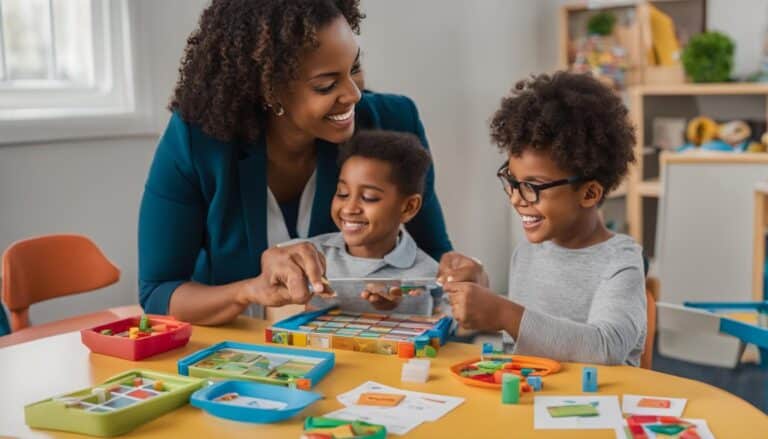Top Gross Motor Activities for Kids: Essential Skills for Development
Gross Motor Activities: Essential Skills for Development in Kids
Gross motor activities are fundamental for children’s physical development, helping them build strength, coordination, and balance. Engaging in activities that stimulate large muscle groups not only promotes physical fitness but also enhances mental and social skills. In this article, we explore the importance of gross motor activities, the skills they develop, and some top activities to encourage physical growth in children.
What Are Gross Motor Skills?
Gross motor skills involve the movement and coordination of large muscles in the body, particularly in the arms, legs, and torso. These skills allow children to perform everyday functions, such as walking, jumping, running, and maintaining balance. Gross motor development is essential as it serves as a foundation for fine motor skills, which involve smaller movements like writing and tying shoelaces.
Benefits of Gross Motor Activities
- Physical Strength
Engaging in physical activities strengthens muscles, improves flexibility, and builds endurance. - Improved Balance and Coordination
Activities that challenge a child’s balance and coordination help them become more aware of their body’s position and movements. - Enhanced Social Skills
Group activities teach teamwork, patience, and communication, which are essential for social development. - Boosts Confidence and Independence
Mastering physical tasks gives children a sense of accomplishment and boosts their confidence. - Cognitive Development
Gross motor activities stimulate areas of the brain responsible for learning, attention, and memory, supporting academic skills.
Top Gross Motor Activities for Kids
1. Obstacle Course
An obstacle course is a fun and versatile way to improve strength, coordination, and problem-solving skills.
- Benefits: Builds muscle strength, enhances balance, and improves cognitive skills through strategic planning.
- How to Set Up: Use household items like pillows, cones, and boxes. Set different tasks at each station, such as crawling under tables or jumping over pillows.
2. Ball Games
Playing catch, soccer, or basketball is excellent for improving hand-eye coordination and teamwork.
- Benefits: Enhances hand-eye coordination, agility, and social skills.
- Activity Ideas: Start with a simple game of catch and progress to more complex ball games that require running and kicking.
3. Dance Parties
Dancing to music is a joyful way for children to express themselves while developing balance and coordination.
- Benefits: Improves rhythm, coordination, and body awareness.
- Activity Ideas: Encourage freestyle dancing or teach them simple dance routines. You can also introduce musical games like “Freeze Dance.”
4. Jump Rope
Jumping rope is a classic activity that builds endurance, coordination, and timing.
- Benefits: Boosts cardiovascular fitness, coordination, and agility.
- How to Play: Start with basic jumps, and as children gain confidence, introduce variations like double jumps or side-to-side movements.
5. Playground Play
Activities on playground equipment like swings, slides, and monkey bars challenge children’s strength and balance.
- Benefits: Builds upper body strength, balance, and spatial awareness.
- Activity Tips: Encourage climbing, swinging, and sliding to strengthen different muscle groups.
Incorporating Gross Motor Activities at Home
Setting up activities at home can be simple and cost-effective. Here are a few tips for encouraging more movement:
- Rotate Activities
Keep kids engaged by rotating different activities throughout the week. - Create a Safe Space
Ensure there’s enough space for movement and that the area is free from sharp or dangerous objects. - Use Everyday Items
Common household items can be used creatively to create new activities. For instance, couch cushions can become stepping stones, or a hallway can be a running track.
Developmental Milestones for Gross Motor Skills
Understanding general milestones can help you gauge whether a child is progressing typically in their motor skill development.
- Ages 1–2: Walking independently, beginning to run, climbing on furniture.
- Ages 3–4: Riding a tricycle, hopping on one foot, throwing a ball.
- Ages 5–6: Skipping, catching a small ball, balancing on one foot.
Gross Motor Activities for Different Age Groups
Toddlers (Ages 1–3)
- Suggested Activities: Crawling through tunnels, pushing and pulling toys, and climbing.
Preschoolers (Ages 3–5)
- Suggested Activities: Kicking a ball, balancing on one foot, and navigating simple obstacle courses.
School-Aged Children (Ages 5+)
- Suggested Activities: Jumping rope, cycling, swimming, and playing sports.
Tips for Encouraging Gross Motor Development
- Be Supportive and Positive
Encourage children with positive feedback to help them feel motivated and excited to participate in physical activities. - Lead by Example
Children often mimic adults. By engaging in physical activities, parents can set a healthy example. - Limit Screen Time
Reducing screen time opens up opportunities for more active play. - Incorporate Playdates
Social interaction can make physical activities more engaging for children.
FAQs about Gross Motor Activities
What are some simple gross motor activities for toddlers?
Toddlers enjoy activities like crawling, climbing on soft furniture, and playing with push-and-pull toys. These activities help build strength and coordination.
How can I improve my child’s gross motor skills at home?
Encourage active play by setting up an obstacle course, playing ball games, or engaging in simple dance routines. Regularly practicing these activities can gradually improve their motor skills.
What are the developmental benefits of gross motor activities?
Gross motor activities enhance physical strength, balance, and coordination. They also contribute to cognitive development by stimulating memory, focus, and spatial awareness.
Are gross motor activities suitable for all age groups?
Yes, gross motor activities are beneficial across all age groups, though activities should be age-appropriate to match physical and cognitive development levels.
What equipment is useful for gross motor activities?
Common equipment includes balls, jump ropes, tunnels, and cones. Household items can also be used creatively to set up different activities.
Can gross motor activities improve academic performance?
Yes, engaging in gross motor activities can improve focus, memory, and problem-solving skills, which are essential for academic success.
Conclusion
Gross motor activities play a critical role in a child’s physical, cognitive, and social development. By incorporating various engaging activities into daily routines, parents and educators can foster growth and set the foundation for lifelong health and fitness. Whether through simple at-home exercises or structured outdoor play, promoting gross motor skills will benefit children for years to come.






